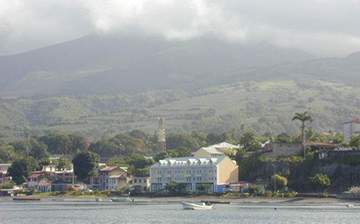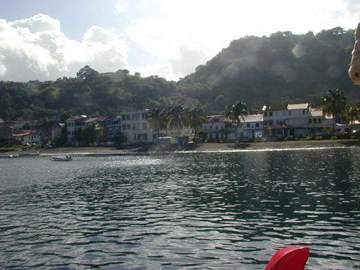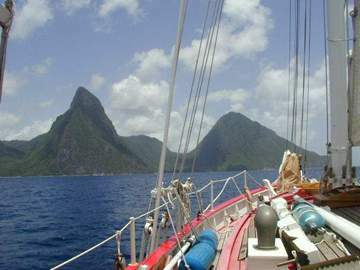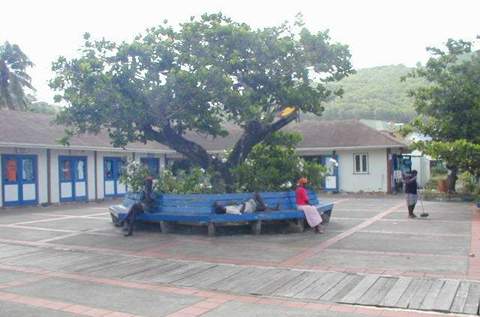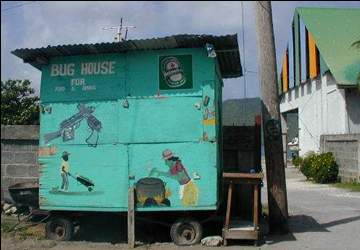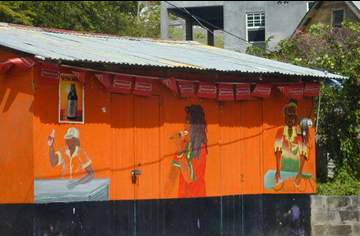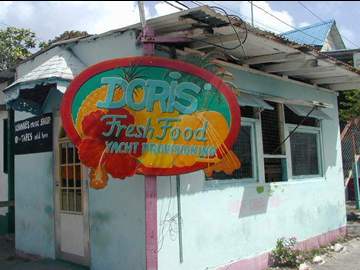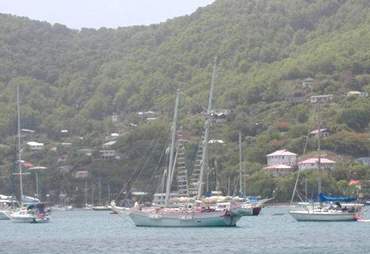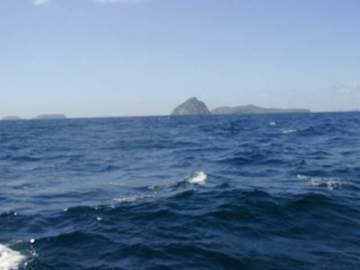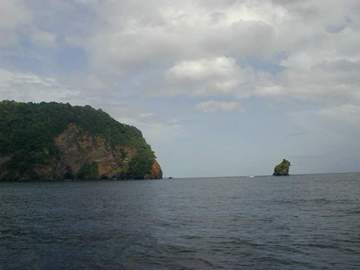Adventures aboard SV/Thaleia
|
Leewards and Windwards |
| Montserrat, a peaceful beautiful island in the north, can be devastatingly disruptive in the south. We didn't leave the boat in Montserrat because the best anchorage for going to town is in the area devestated by the volcano. It was awesome to sail by, but because of the threat of eruption, we stayed our distance.
|
We just heard that the volcano has become active again, spewing ash and lava over the Soufriere Valley. Nevis (below), an island just to the south of Ste. Martin, has volcanic action also and you can see the crater very clearly from a distance. |
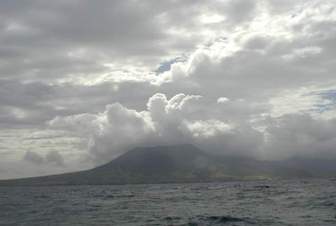 | |
| We had several favorite islands in the Leewards and Windwards, and Guadeloupe was the first. It's actually part of France and the difference between the French and former British islands is not only in the language spoken there. Because the French islands (Guadeloupe, the Saints, Martinique) are actually a department of France, they have the advantage of a well supported infrastructure, cultural infusion, and duty free goods from France (wines, cheeses, pates, fresh meats, exceptional canned goods) as well as the tradition of baking and cooking. Below is the harbor at Guadeloupe. We arrived just before the town's people gathered by the steeple (center) for a funeral. The crowd walked behind the hearse, up the steep hillside, to an above ground burial site where they laid their beloved person to rest.
|
Fishermen bring in the catch in the early morning in Guadeloupe. They take great pride in their small wooden skiffs and the brightly painted vessels are seen in all of the islands of the Caribbean. |
|
Our first landfall in Martinique was at St. Pierre. Isn't this a beautiful harbor? The original city was destroyed by a volcano, and the new city is built around the ruins, often joining an old wall with a new structure.
|
Our next port of call in Martinique was Anse Mitan, just across the harbor from the very busy Fort de France, Martinique's capital city. At this anchorage, we were able to enjoy a resort community and take the ferry over to the big city to explore the shops and the restaurants. We felt as though we had finally arrived at an island far enough south that we could consider staying through the hurricane season. |
|
St. Lucia is also a beautiful island. These two peaks are called the Pitons, and the anchorages (right and right below) in and around these mountains are spectacular. We did some of the nicest snorkling here that we've done in the island chain.
|  |
| Also
common in the islands are the brightly colored skiffs used by the "boat guys".
They visit just after you anchor and offer friendly advice, fresh fruits, vegetables,
fish, conch, water taxi service, and any other goods and services that they think
you may desire, all with a smile. .In turn, they make a modest living from the
cruisers in these popular anchorages. |
 |
| On down the island chain, Bequia, an island in the Grenedines, was another favorite The village is one of the most colorful we've seen and is particularly friendly to sailors. In fact, Bequia has a history of sailing and boat building. We walked through the village and watched several boatrights building new boats. They take great pride in their boats and it's hard to find one that isn't impecably maintained.
|
In the islands, lobsters are called "bugs". It wasn't lobster season in Bequia, so I'm not too sure what this shack is used for, but it is certainly artfully painted. |
|
In the town square, the small market is a great place to get bananas and pineapples. The Rastafarians who sell their wares compete hard for a small sale. |
Another colorful place of business... |
|
|
Doris is an industrious East Indian woman who stocks all manner of gourmet items seldom, if ever, seen in the Caribbean. |
|
More colorful boats. The names, Free Man and Why Marry, say it all...
|
Thaleia lying at anchor in Bequia. |
|
We are heading to Grenada... last stop before our destination: Trinidad. |
I couldn't resist taking a picture of the salt fish and rice dish I learned to make in Grenada. Salt fish, usually pollock or mackeral, is preserved indefinitely in salt, and is sold in most of the markets in the Windward islands, probably because refrigeration is not univerally available. To prepeare salt fish, just soak it for a day or so, changing the water 2 or 3 times. Then cut it into chunks, and saute it with onions, garlic, and some kind of green leafy vegetable shreaded. In Grenada, they also use little colorful peppers, not too hot but very flavorful. |
|
Trinidad....we are here!! |
Trinidad's
north coast is steep to with caves and rain forest right up to the water's edge.
This was our first real view of the land as we approached the passage between
the rocks (left). |




